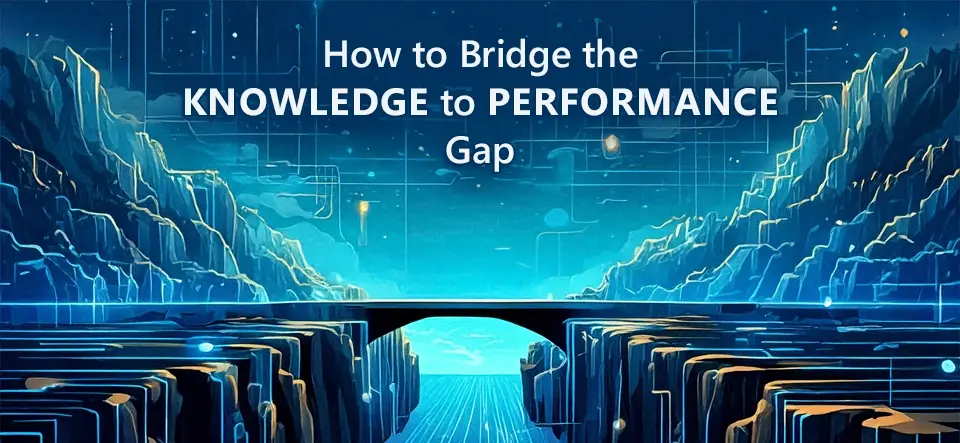 5-minute read
5-minute read
The Hidden Cost of the Performance Gap
You've invested in learning. Your people have completed courses, passed assessments, know the material.
But when they face pivotal decisions in real situations—clinical reasoning, sales conversations, compliance judgment, operational protocols—their decisions often miss the mark.
Deals are lost. Patient outcomes suffer. Compliance risks emerge. People and Teams underperform.
That's the knowledge-to-performance gap—the gap between your learning investment and the performance you're getting.
How AliveSim Helps Organizations Close the Gap
AliveSim closes that gap by helping people learn what to do in the moments that matter.Through realistic scenarios with expert coaching, people make decisions, discover why certain approaches work, and build the judgment that drives performance—not through passive content, but through active decision-making.
15 Ways Organizations Use AliveSim
As you review these use cases, consider how many apply to your organization:

Core Decision-Making
1. Clinical Reasoning & Diagnosis
Healthcare decision-making, treatment paths
Learners face realistic patient presentations, make diagnostic and treatment decisions, and discover multiple optimal approaches through expert coaching—building pattern recognition to adopt new clinical strategies.
2. Operations & Protocol Adoption
Which protocol when, troubleshooting, exception handling
Learners practice applying operational protocols in varied contexts, making decisions about when standard procedures apply, how to troubleshoot exceptions, and which approach fits specific situations—developing the judgment that prevents costly errors.
3. Compliance & Regulatory Judgment
Gray area decisions, when rules apply
Learners navigate the nuanced space between clear violations and acceptable practices, making judgment calls in ambiguous situations and understanding the reasoning behind regulatory boundaries—moving beyond rule memorization to principled decision-making.
4. Critical Thinking & Problem Solving
Root cause analysis, solution selection, troubleshooting logic
Learners are immersed in common organizational challenges where they weigh multiple viable options and develop the structured thinking patterns that expert problem-solvers in the organization use instinctively.
5. Ethical Decision-Making
Navigating dilemmas, competing values, professional boundaries
Learners confront scenarios where multiple values compete, practice reasoning through ethical frameworks, and discover how experienced professionals maintain boundaries while addressing real-world complexity—building confidence for high-stakes ethical decisions.
Strategic Business Decisions
6. Sales Process Strategy
Strategic decisions at right times in the sales process
Learners navigate critical moments in the company's sales process—like a new skeptical stakeholder entering late in the cycle—practicing the judgment calls that separate closed deals from lost opportunities, and discovering why certain approaches work in their specific selling environment.
7. Leadership Problem Diagnosis & Intervention
What's causing the issue? Which management approach? Strategic priorities
Learners confront the specific performance and team challenges their organization faces, practice diagnosing root causes using the company's leadership framework, and adopt the nuanced intervention strategies that effective leaders in the organization use to drive results.
8. Change Management Strategy
Stakeholder approach, resistance strategies, sequencing decisions
Learners navigate the specific organizational changes underway—whether process transformations, system implementations, or cultural shifts—practicing stakeholder engagement decisions, addressing the resistance patterns that emerge in their environment, and adopting the sequencing strategies that successful change agents in the company have proven effective.
9. Customer Service Problem Resolution
Solution paths, policy exceptions, escalation judgment
Learners encounter service situations requiring judgment calls—when to follow the standard policy, when circumstances warrant flexibility, how to resolve competing priorities—and practice the decision-making that creates both customer satisfaction and operational efficiency.
Interpersonal Strategy & Judgment
10. Coaching & Mentoring Process Optimization
When to coach vs direct? Which approach? Reading situations
Learners practice applying the organization's coaching process across the typical situations where managers struggle—recognizing when to coach versus when to direct, adapting the company's framework to different performance scenarios, and building consistency in how the organization develops talent.
11. Conflict Resolution Strategy
Diagnosing conflict type, intervention choice, predicting outcomes
Learners practice resolving the specific types of conflicts that disrupt the organization—whether cross-functional tensions, team dynamics, or stakeholder disagreements—diagnosing what's really happening, selecting intervention strategies that work in their culture, and adopting the approaches that experienced leaders use to restore productive relationships.
12. Cross-Cultural Strategy
Strategic decisions across cultural contexts
Learners navigate the specific cross-cultural challenges their organization faces—whether global team collaboration, international customer relationships, or regional market dynamics—practicing how different approaches land across the cultural contexts where the company operates and building the global competence their role requires.
Knowledge Transfer
While the first twelve use cases focus on decision-making and judgment, AliveSim also transforms how organizations transfer foundational knowledge:
13. Engaging Knowledge Transfer via Interactive Conversation
Modern alternative to traditional elearning
Learners engage with concepts through dynamic avatar conversations rather than passive videos, slide decks, or static text—experiencing knowledge introduction in realistic contexts where information naturally arises, creating the engagement that traditional content delivery rarely achieves.
14. Adaptive Knowledge Assessment Through Contextual Decisions
Not info→quiz; instead, assess understanding and deliver education when needed
Learners demonstrate knowledge mastery through decisions in realistic contexts. Those who know the material get reinforcement and move on quickly; those who don't get targeted education exactly when they need it—eliminating the inefficiency of one-size-fits-all explanations.
15. Knowledge Application in Realistic Scenarios
Making learning stick through contextual practice
Learners immediately apply newly learned concepts in realistic situations requiring that knowledge, receive expert feedback on their application, and transform abstract understanding into practical competence that transfers to real performance.
The Unifying Thread
Whether clinical reasoning or sales strategy, compliance judgment or leadership decisions, the challenge is the same: helping people learn what to do when it matters. That's what AliveSim does—closing the application gap wherever decisions affect performance.
Now with AliveSim Studio, organizations can quickly build these experiences themselves—creating realistic scenarios with conversational avatars, challenging decision points, and expert coaching tailored to their specific performance gaps. Your situations. Your reality. Your people learning what to do.
Ready to Explore?
See how organizations are using AliveSim to transform decision-making capabilities across these domains and more.
Learn more about the AliveSim platform


